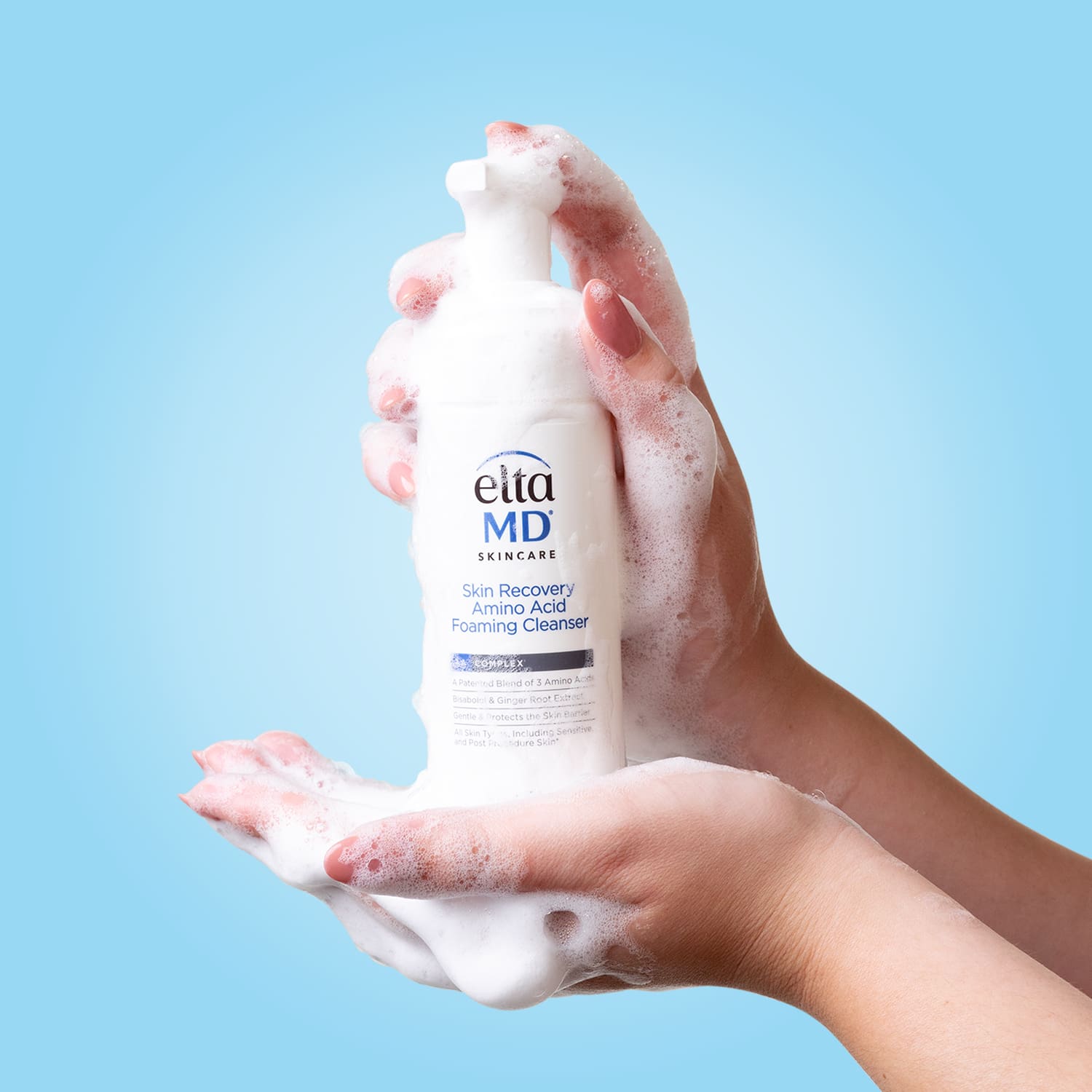Everyone's skin care regimen looks different because we all have different skin types, conditions, and goals. However, most routines have at least one thing in common: the first step is usually a facial cleanser. This vital step washes away impurities like dirt and pollutants, removes makeup and sunscreen, and allows other products to penetrate deeper into the skin.
Within this common step, there's a lot of variation. You can choose from many types of cleansers. But what takes gold in the foaming vs. non-foaming cleanser showdown? Dive in for a closer look at one of the most popular types—foaming cleansers—and how they differ from the rest.
What's the Difference between Foaming and Non-Foaming Cleanser?
You can categorize cleansers in many ways. For example, you may group them by their active ingredients or whether they're water- or oil-based. You can also differentiate cleansers based on their consistency or texture, such as with foaming cleansers.
What Are Foaming Cleansers?
As the name suggests, foaming cleansers have an airy, foamy consistency. When they come into contact with water, they create a rich, satisfying lather similar to shampoo. However, foaming cleansers aren't as abrasive as regular soaps. These suds are formulated without skin-stripping ingredients and contain pockets of air, making them lightweight and gentle. While formulas vary, foaming cleansers are water-based and often oil-free.
EltaMD Skin Recovery Amino Acid Foaming Cleanser is a prime example. With soothing ingredients that nourish the skin barrier, this foaming cleanser is suitable for all skin types, including sensitive and compromised skin. Plus, it's free from oils, fragrances, and pore-clogging ingredients. So, what's in it? An effective, balanced combination of amino acids to strengthen the skin, mild surfactants to remove residue and impurities, and Bisabolol and Ginger Root to calm the skin and reduce redness.
What Are Non-Foaming Cleansers?
Foaming cleansers are common, but they're not your only option. Other common types include cream, gel, and oil cleansers. Here's how they stack up.
Cream Cleansers
Cream cleansers are generally the most moisturizing. Their creamy consistency makes them ideal for dry skin, ensuring it doesn't feel tight or stripped. They often contain ingredients that soften the skin, such as plant oils. Unlike foaming cleansers, cream cleansers form a milky emulsion rather than a rich lather.
Gel Cleansers
These cleansers have a smooth, gel-like consistency. When activated with water, they create a lather—but to a lesser degree than foaming formulas. Compared to foaming cleansers, they often offer a deeper cleanse and may contain active ingredients to reduce acne or exfoliate the skin.
Oil Cleansers
Oil cleansers are commonly used in double cleansing routines because they effortlessly break down stubborn makeup and sunscreen residue. While foaming cleansers are water-based and oil-free, oil cleansers embrace the skin benefits of oils, such as attracting and melting away excess sebum and supporting skin barrier function.
What Does Texture Have to Do with It?
When comparing a foaming vs. non-foaming cleanser, the main difference is how they feel on the skin. On a spectrum from lightweight to rich, foaming cleansers are lightweight while oil cleansers feel heavier on the skin. Cream and gel cleansers fall somewhere in the middle. A cleanser's consistency can make it more or less suitable for a specific skin type. For example, if you have oily skin, you may gravitate toward lightweight products that feel refreshing, like foaming cleansers, or choose to double cleanse.
Benefits of Foaming Cleansers
Regardless of formula type, an effective cleanser removes makeup and sunscreen, dirt and pollutants, and excess oil (a.k.a. sebum) to promote healthy skin and prevent clogged pores. However, foaming cleansers provide some distinct benefits.
Suitable for All Skin Types
Foaming cleansers are suitable for a variety of skin types. They can penetrate deep into the pores, making them an obvious choice for oily, combination, and acne-prone skin. However, many formulas are gentle enough for sensitive and dry skin, too. Unlike harsh face washes, foaming cleansers provide a deep cleanse without stripping the skin of its natural oils, which can leave the skin feeling uncomfortably tight and dry.
Easy to Incorporate into Any Skin Care Routine
Foaming cleansers are easy to use and require minimal effort. They create a familiar, well-loved lather, so if you're new to facial cleansers, there's not a steep learning curve. While you should apply foaming cleansers to damp skin, you don't have to activate them with water like some other formulas. This type of cleanser foams up on its own, so all you need to do is massage it into your skin and rinse thoroughly.
Versatile
Foaming cleansers make a suitable vehicle for many skin-loving ingredients. So, you can narrow down your options according to additional benefits, such as calming inflammation, supporting skin barrier function, or reducing redness.
Is Foaming Cleanser Right for You?
Depending on your skin type and needs, a foaming cleanser could be the perfect first step in your skin care routine. These cleansers are particularly beneficial for oily or combination skin since they reduce excess sebum without stripping the skin. Their pore-clearing abilities make them great for acne-prone skin, too.
If you have very oily skin or wear water-resistant sunscreen or long-wear makeup, you may benefit from using a foaming cleanser as the second step in a double cleansing routine. Whatever your routine looks like, opt for a gentle formula with ingredients that support skin integrity. Cleanse once or twice a day to keep your skin clean, clear, and radiant.
